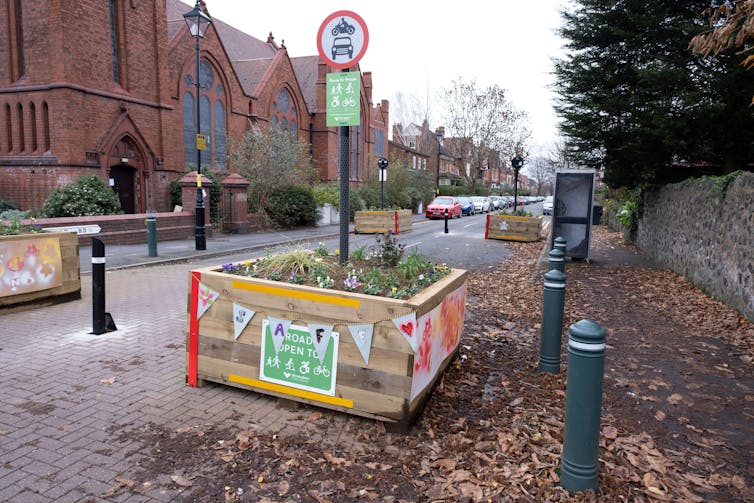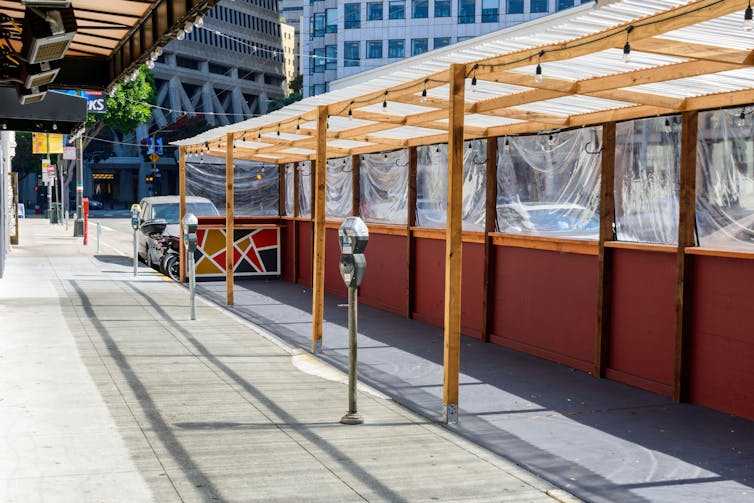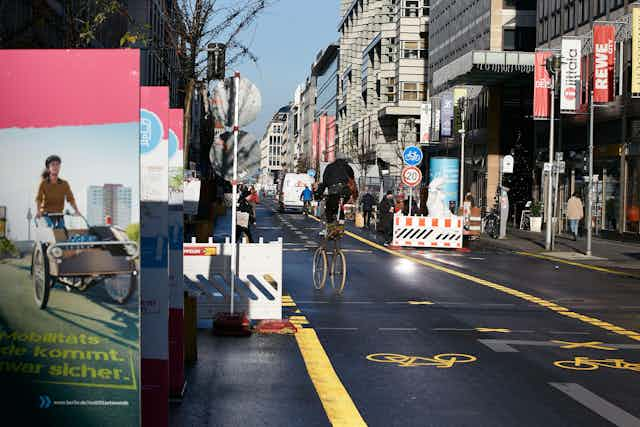The pandemic, as the United Nations secretary general, António Guterres, acknowledged in July 2020, is a deeply urban crisis. COVID has flourished due to the things that are a city’s strengths: population density and diversity, concentrations of logistics and mobility networks, fluid population bases.
It has also flourished due to the deep, structural flaws in many of our cities: poor air quality, food inequalities, crowded or unaffordable housing, poor provision of public space, often unhealthy populations. Long-standing systemic health and social inequities have exacerbated the impact of the pandemic on city residents, disproportionately affecting racial and ethnic minority groups.
When the coronavirus first hit, people speculated that it might even bring about the end of the city. Evidence from around the world, however, suggests that cities are simply adapting, as they have always done.
In response to the crisis, city governments have altered the urban environment rapidly and effectively. A 2020 review of city-based COVID-19 innovations by the Organisation for Economic Cooperation and Development (OECD) shows how councils have tinkered, trialled and retrofitted in ways that were unthinkable before the pandemic hit.

Tactical responses
Both cities and citizens have often shown that they can adapt rapidly under crisis conditions. A two-day transport strike in London in 2014 prompted approximately 250,000 commuters to reconsider their regular routes, changing their mobility habits permanently.
Centuries earlier, the rebuilding of London after the great fire of 1666 ended up being more improvised than planned. But it also resulted in English physicist-architect Robert Hooke helping to develop the city’s first meaningful building codes.
More broadly, responses to infectious diseases have influenced the way the urban environment has evolved. The British surgeon apothecary John Snow is known for his experiments on a Soho water pump in 1854. He identified cholera as a water-borne disease, which led to systemic transformations in the urban water supply.
During COVID, street usage in cities around the world has shifted, partially, and at least temporarily, towards walking, cycling, outdoor eating, greenery and the local economy. Small parks – sometimes called parklets – have sprung out of reconfigured car parks or taken over on-road parking spaces. Diners have eaten out on temporarily rethought pavements.
Embracing such al fresco possibilities has of course been a health necessity, precipitated by the pandemic. It has also emphasised the essential value of convivial places with cultural activity, local engagement – and fresh air.
New York offers an example of how cities might capture data and learn from these tactical, reactive solutions – which can be thought of as prototypes – to improve people’s lives in the long term. With its Open Restaurants program, the city has focused on expanding outdoor seating options for thousands of food establishments, documenting everything via a publicly accessible platform.

At the same time, many of these changes have simply been about projecting some tangible sense at normality. They have often only served a relatively small number of residents.
From fix to fixture
More broadly, the Covid Mobility Works website has collated examples of fixes, from more than 245 cities, that have sought to aid equity and accessibility, the transport of goods and people, public engagement and health and safety, among other categories. In Berlin, some new bike lanes were designed and approved within ten days, rather than the months it had previously taken. Pop-up bike lanes have appeared everywhere elsewhere too, from Budapest and Bogotá to Mexico City and Dublin. The city of Mumbai has appointed cycle councillors to all 24 of its civic wards.
In England, the quieter, safer and sometimes modified streets meant the number of cycling trips made by women rose by 50% in 2020. London fast-tracked its low-traffic neighbourhoods by some years, even if the rush to implement them meant engagement and planning was sometimes lacking. Similar schemes in New Zealand’s cities and Vancouver to create healthy, sustainable neighbourhoods have been comparatively well considered.
These aren’t exactly new endeavours. Urban development experts have been working on such concepts for years. These include Barcelona’s superblock car-free zones and the 15-minute city concept – which aims to have residents live, work and shop all within a 15-minute radius – that has been implemented in Paris. In Sweden, meanwhile, the hyperlocal one-minute city model involves planning focused at single-street level: residents have a say in how much space is given over to cars. And in Seattle, the local government is opening up 45 miles of neighbourhood greenways – not only as a COVID-19 fix, but a step towards making the city liveable in the long term.
The impact of increased shopping and working online also predates the pandemic, yet a diverse array of urban lockdowns has pulled focus on these awkward questions too. Only a handful of cities are coherently addressing all of these linked challenges systemically.

The pandemic can be seen as having instituted a period of forced experimentation and forward thinking. But beyond the immediate tactical responses by local governments, and the visceral experiences of residents, cities face deeper strategic challenges. If we can see the links between these patterns associated with COVID-19 and other, deeper crises – the climate crisis, mass migration, social justice – there may be much to gain from the apparently mundane COVID-induced changes to our urban environments. Cities thrive not simply as economic powerhouses but also as inclusive, diverse communities and regenerative places.
A longer version of this article can be read on the IPPO Cities website.

